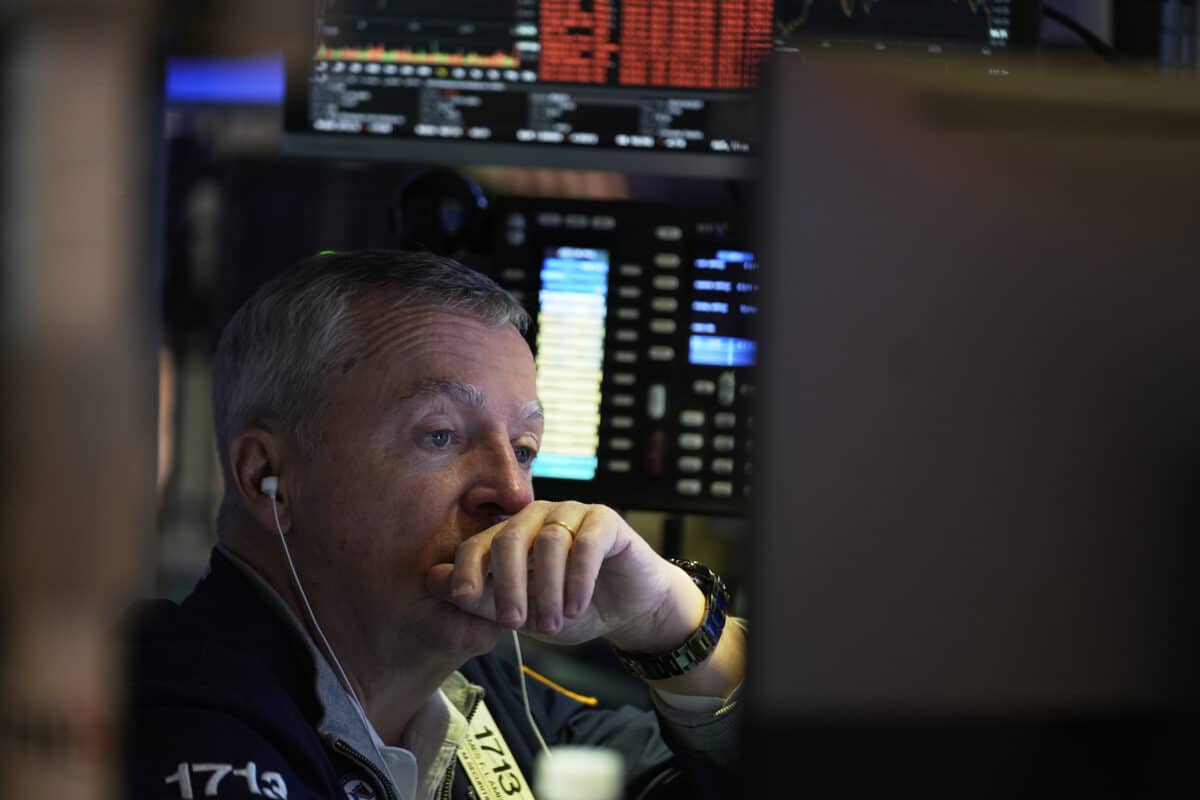
NEW YORK — Wall Avenue might quickly be within the claws of one other bear market because the Trump administration’s tariff blitz fuels fears that the added taxes on imported items from around the globe will sink the worldwide financial system.
READ: US shares dip after careening by means of a manic day
The final bear market occurred in 2022, however this decline feels extra just like the sudden, turbulent bear market of 2020, when the benchmark S&P 500 index tumbled 34% in a one-month interval, the shortest bear market ever.
Listed below are some widespread questions on bear markets:
Why is it known as a bear market?
A bear market is a time period utilized by Wall Avenue when an index such because the S&P 500 or the Dow Jones Industrial Common has fallen 20 p.c or extra from a current excessive for a sustained time frame.
Why use a bear to seek advice from a market stoop? Bears hibernate, so that they signify a inventory market that’s retreating. In distinction, Wall Avenue’s nickname for a surging market is a bull market, as a result of bulls cost.
The S&P 500, Wall Avenue’s essential barometer of well being, closed 0.2 p.c decrease Monday after having been down by as a lot as 4.7 p.c. It’s now 17.6 p.c under the all-time excessive it set on Feb. 19.
The Dow industrials fell 0.9 p.c, and the tech-heavy Nasdaq composite, which already was in a bear market, bounced again from an early slide to eke out a 0.1-percent acquire.
The latest bear marketplace for the S&P 500 ran from Jan. 3 to Oct. 12 in 2022.
What’s bothering traders?
The commerce battle has ratcheted up worry and uncertainty on Wall Avenue over how companies and shoppers will reply.
President Donald Trump adopted by means of on tariff threats final week by declaring a 10-percent baseline tax on imports from all international locations and better tariff charges on dozens of countries that run commerce surpluses with america.
World markets cratered the following day, and the sell-off deepened after China introduced it will retaliate with tariffs equal to those from america.
READ: China retaliates as Trump’s tariffs have an effect on world markets
Tariffs trigger financial ache partly as a result of they’re a tax paid by importers that usually will get handed alongside to shoppers, including to inflationary strain. In addition they provoke buying and selling companions into retaliating, which may harm all economies concerned.
Import taxes also can trigger financial harm by complicating the selections companies should make, together with which suppliers to make use of, the place to find factories and what costs to cost. And that uncertainty may cause them to delay or cancel investments that assist drive financial development.
The tariffs come at a time when the US financial system is already exhibiting indicators of slowing. Markets are additionally fearful that tariffs might gasoline inflation, which lately ticked greater.
How lengthy do bear markets final and the way deep do they go?
On common, bear markets have taken 13 months to go from peak to trough and 27 months to get again to breakeven since World Struggle II. The S&P 500 index has fallen a mean of 33 p.c throughout bear markets in that point. The largest decline since 1945 occurred within the 2007-2009 bear market, when the S&P 500 fell 57 p.c.
Historical past exhibits that the quicker an index enters right into a bear market, the shallower they are typically. Traditionally, shares have taken 251 days (8.3 months) to fall right into a bear market. When the S&P 500 has fallen 20% at a quicker clip, the index has averaged a lack of 28 p.c.
The longest bear market lasted 61 months and resulted in March 1942. It minimize the index by 60 p.c.
When is a bear market over?
Typically, traders search for a 20-percent acquire from a low level in addition to sustained beneficial properties over a minimum of a six-month interval. It took lower than three weeks for shares to rise 20% from their low in March 2020.
Ought to traders promote now?
For those who want the cash now or need to lock within the losses, sure. In any other case, many advisers counsel using by means of the ups and downs whereas remembering the swings are the worth of admission for the stronger returns that shares have supplied over the long run.
Whereas dumping shares would cease the bleeding, it will additionally forestall any potential beneficial properties. Most of the greatest days for Wall Avenue have occurred both throughout a bear market or simply after one ended.
That features two separate days in the midst of the 2007-2009 bear market when the S&P 500 surged roughly 11 p.c, in addition to leaps of higher than 9 p.c throughout and shortly after the monthlong 2020 bear market.
Advisers counsel placing cash into shares provided that it is not going to be wanted for a number of years. The S&P 500 has come again from each considered one of its prior bear markets to finally rise to a different all-time excessive.
The down decade for the inventory market following the 2000 bursting of the dot-com bubble was a notoriously brutal stretch, however shares have usually been capable of regain their highs inside just a few years.


